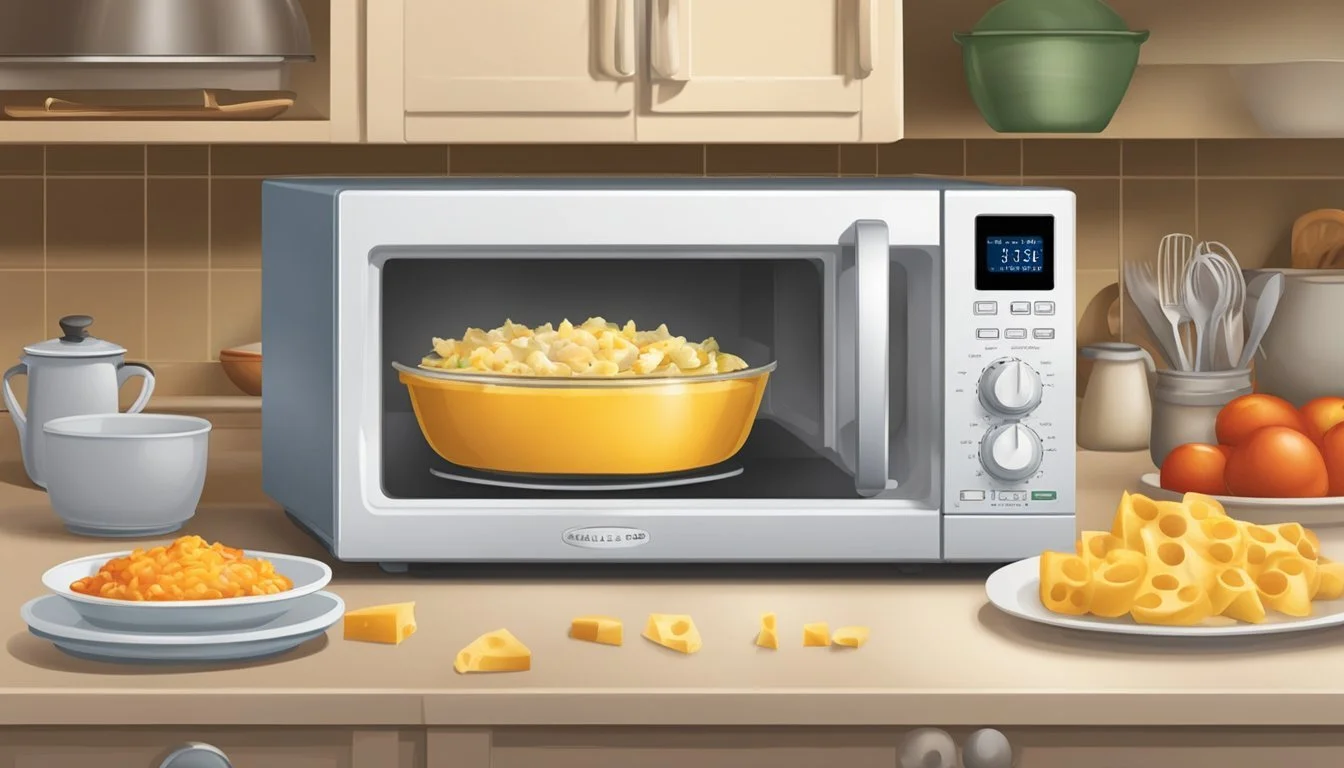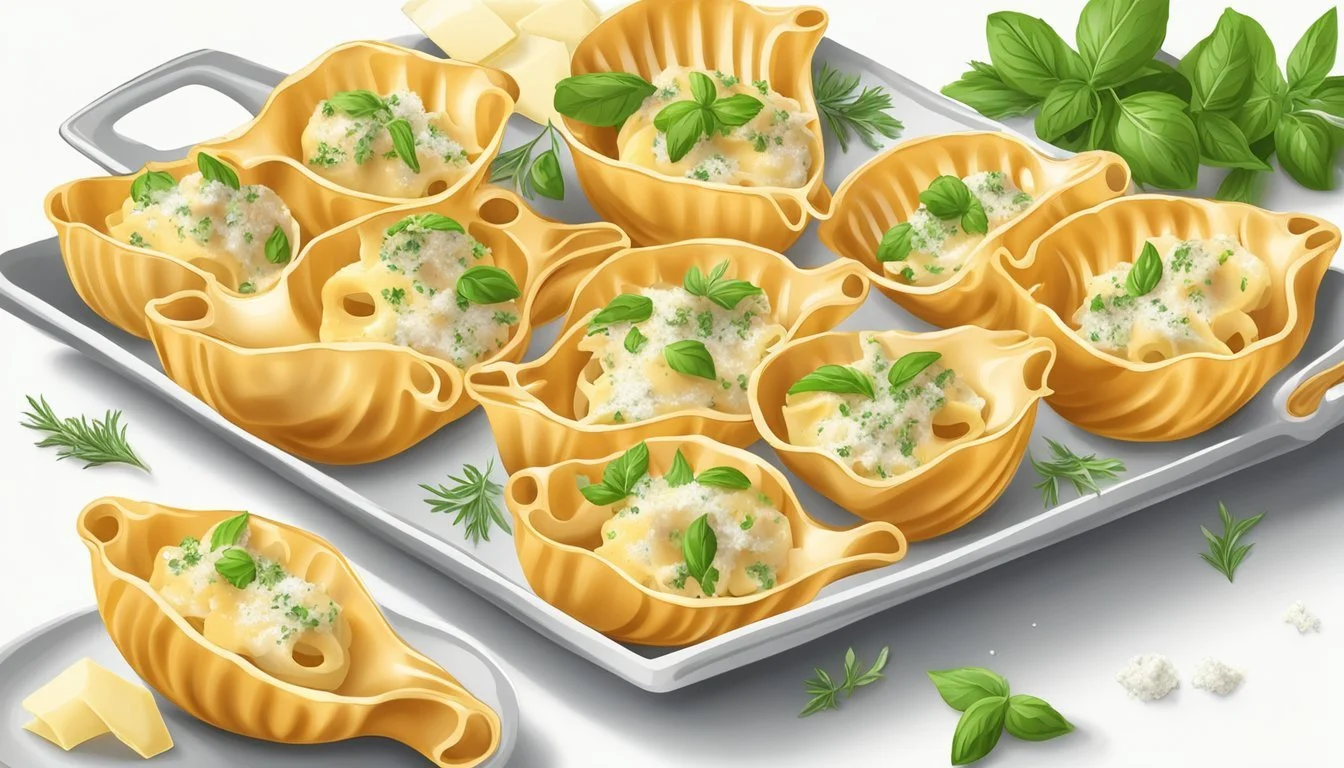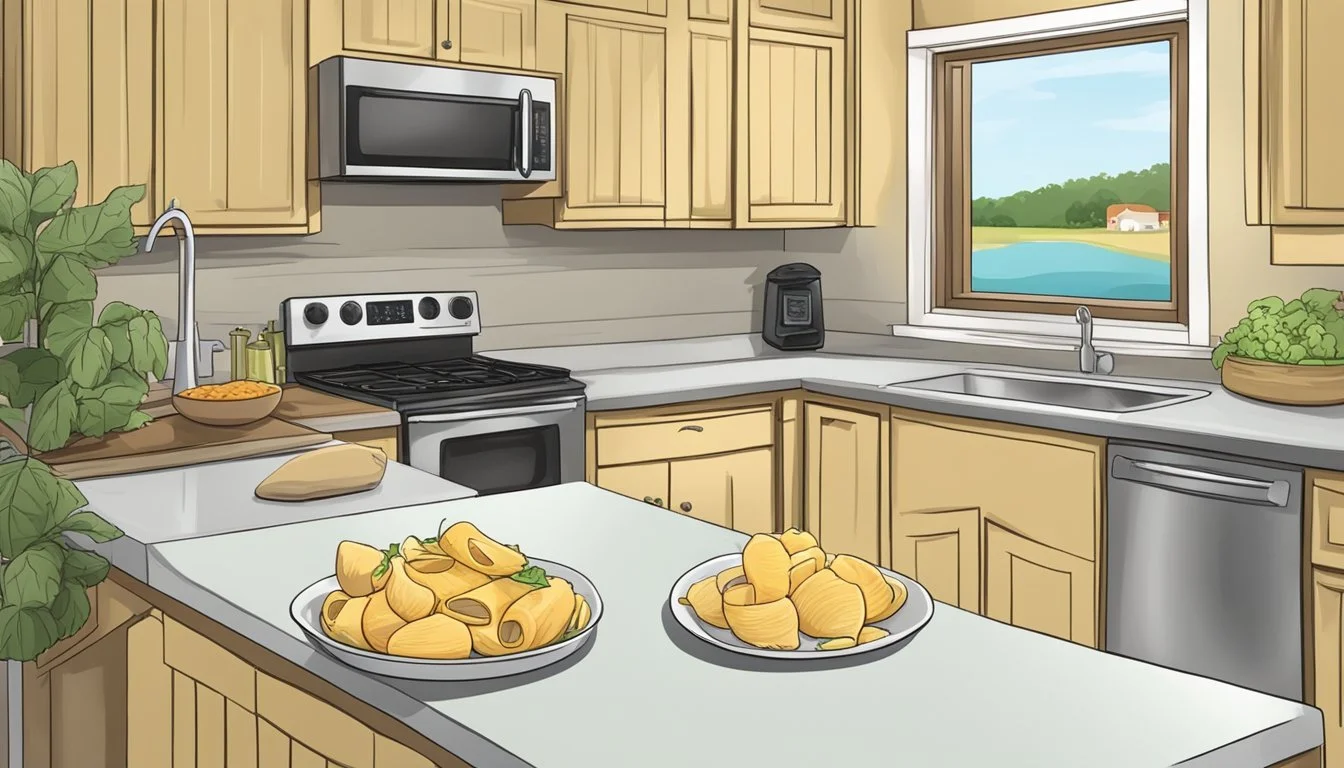How to Reheat Cheese Stuffed Shells
Best Methods Explained
Cheese stuffed shells are a delightful dish that many enjoy, but reheating leftovers can sometimes be tricky to get just right. To reheat cheese stuffed shells properly, consider using methods like the oven, microwave, air fryer, or stovetop to maintain their texture and flavor. Each method offers unique benefits that ensure your meal is just as delicious as when it was first made.
Using the oven is ideal for achieving an even heat without drying out the cheese and sauce. Preheat your oven to 350°F (175°C), cover the shells with aluminum foil, and bake until they reach an internal temperature of 165°F. For a quicker option, the microwave can be employed by covering the shells lightly with a microwave-safe lid or wrap and heating in intervals until warm.
Alternatively, the stovetop and air fryer provide other reheating opportunities that prevent burning and stickiness. Ensure that the shells are placed in a pan with a bit of water and covered when using the stovetop, or on foil in the air fryer basket for consistent results. No matter the method, these techniques ensure your cheese stuffed shells retain their delicious, cheesy goodness.
Understanding Stuffed Shells
Cheese stuffed shells are a comforting Italian dish, featuring pasta shells filled with a rich mixture of cheeses. Proper reheating ensures the dish maintains its delicious texture and flavor.
Components of Cheese Stuffed Shells
Ingredients: This dish includes large pasta shells, typically filled with a mixture of ricotta, mozzarella, and parmesan cheeses. The filling often incorporates herbs like basil or parsley for added flavor.
Marinara Sauce: A generous layer of marinara sauce is used both in the filling and covering the shells. The sauce not only enhances the flavor but also keeps the pasta moist during baking.
Texture and Flavor: The combination of melt-in-the-mouth cheese and al dente pasta creates a satisfying texture. A well-balanced blend of cheeses offers a depth of flavor, making each bite delightful.
Why Proper Reheating Matters
Proper reheating is crucial to maintaining the dish's quality. Reheating helps the cheese melt evenly, restoring the original creamy texture without drying out.
Texture Preservation: Overheating can cause the cheese to become hard or the pasta to turn mushy. Setting the right temperature ensures the shells remain tender and the cheese stays gooey.
Flavor Enhancement: Slow and even reheating retains the flavors of the herbs and marinara sauce. Quick or uneven reheating might result in burnt edges or cold spots, detracting from the dish's overall taste.
Moisture Control: Covering the shells with foil or a lid during reheating prevents them from drying out. This method ensures the marinara sauce keeps the pasta moist, preserving the original comfort food quality.
Preparation Before Reheating
Proper preparation is important to maintaining the taste and quality of cheese stuffed shells. This includes storing them correctly and thawing them safely before reheating.
Storing Cheese Stuffed Shells
To store cheese stuffed shells, use airtight containers to prevent moisture loss and contamination. If refrigerating, place the shells in a single layer to keep them from sticking together.
For freezing, wrap the shells individually in aluminum foil before placing them in the freezer. This method helps preserve the texture and flavor. Label the containers with the date to keep track of food safety. Stored correctly, cheese stuffed shells can be refrigerated for up to 3-4 days or frozen for up to 2-3 months.
Thawing Frozen Stuffed Shells
Defrosting is best done in the refrigerator overnight. Move the frozen shells from the freezer to the fridge and let them thaw naturally. This method ensures even thawing and maintains food safety by keeping the shells at a controlled temperature.
Avoid defrosting on the counter as this can lead to bacterial growth. For quicker results, use the microwave's defrost setting, but proceed with caution to avoid cooking them. After thawing, ensure the shells reach 165 degrees Fahrenheit when reheated for safe consumption.
Reheating in the Oven
Reheating cheese stuffed shells in the oven ensures even heating and a comforting texture. Specific steps like preheating the oven, using extra sauce, and monitoring the internal temperature are essential for achieving optimal results.
Preheating the Oven
Preheating the oven is necessary to ensure even reheating. Set the oven to 350°F (175°C). This temperature is ideal for rewarming pasta without overcooking it. Wait until the oven reaches the desired temperature before placing the stuffed shells inside. Preheating usually takes around 10-15 minutes, but this can vary by oven model. A preheated oven helps maintain the shell's texture and prevents them from drying out.
Oven-Safe Dish Preparation
Choose an oven-safe dish that can accommodate the shells in a single layer. This promotes even heating. Glass, ceramic, or metal baking dishes work well. Lightly grease the dish or add a thin layer of marinara sauce at the bottom to prevent sticking. Arrange the cheese stuffed shells in the dish, leaving a bit of space between each for better heat circulation. If needed, add a bit more sauce on top for extra moisture.
Covering with Foil
Cover the dish with aluminum foil to retain moisture and ensure even heating. This prevents the shells from drying out. The foil should be tented slightly to avoid direct contact with the cheese, preventing it from sticking. Secure the foil around the edges to lock in steam. Covering with foil also helps maintain a consistent temperature within the dish, resulting in a more uniform reheating process.
Monitoring the Temperature
Check the internal temperature of the cheese stuffed shells to ensure they are heated through. Use a food thermometer to verify that the center of the shells reaches 165°F (74°C). This temperature ensures the filling is hot and safe to eat. Begin checking after about 20 minutes of reheating. If necessary, continue baking in 5-minute intervals until the target temperature is reached. This step is crucial to avoid undercooked or unevenly heated shells.
Serving After Oven Reheating
Let the reheated shells rest for a couple of minutes before serving. This allows the temperature to even out and makes handling safer. Remove the foil carefully to prevent steam burns. Check that the sauce is bubbling and the cheese is melted. Serve the shells directly from the oven-safe dish or transfer them to a serving plate. Adding a sprinkle of fresh herbs or grated cheese can enhance taste and presentation.
Reheating on the Stovetop
Reheating cheese stuffed shells on the stovetop can be an excellent method if done correctly. It's essential to use the right equipment, add moisture, and apply gentle heat to ensure even reheating without drying out the shells.
Choosing the Right Pan
Selecting the appropriate pan makes a significant difference. A skillet with a lid is ideal as it ensures even heat distribution and retains moisture. Make sure the skillet is large enough to fit the shells in a single layer.
Using a non-stick or stainless steel skillet helps prevent sticking. Avoid cast iron as it may retain too much heat and cause the shells to overcook or burn.
Adding Moisture on the Stove
Adding moisture is crucial to keep the shells from drying out. Pour a small amount of liquid such as water or broth into the skillet before placing the shells.
Approximately 2 tablespoons of liquid for a standard-sized skillet should suffice. This liquid will create steam, ensuring the shells stay moist and flavorful.
Covering the skillet with a lid effectively traps steam, enhancing the reheating process.
Using Gentle Heat
Applying gentle, consistent heat is key. Set the stove to medium heat to gradually warm the shells without scorching them.
Start by placing the skillet over medium heat and let it heat for a minute. Add the cheese stuffed shells and cover with the lid. Monitor the cooking time closely.
It should take about 10-15 minutes for the shells to heat thoroughly. Stir occasionally and check to ensure they are evenly heated, adjusting the heat if necessary.
By following these steps, the cheese stuffed shells will be reheated perfectly on the stovetop, preserving their delicious taste and texture.
Reheating in the Microwave
Reheating cheese-stuffed shells in the microwave is an efficient method perfect for those pressed for time. Key elements include setting the microwave correctly, using appropriate dishes, and ensuring the shells remain moist.
Setting the Microwave
Setting the microwave to the appropriate temperature and time is crucial. Begin by placing the microwave on medium-high power. For a small portion, start with around 2-3 minutes. Larger portions might require 4-5 minutes but always check midway to avoid overheating.
Use a food thermometer to ensure the internal temperature of the shells reaches 165°F for safe consumption. If necessary, run the microwave in shorter intervals and stir between heating cycles to distribute heat evenly.
Microwave-Safe Dish Usage
Choosing a microwave-safe dish is essential for even heating and safety. Opt for glass or ceramic dishes as they distribute heat more uniformly than plastic. Ensure the dish is large enough to arrange the shells in a single layer to allow even reheating.
Cover the dish with a microwave-safe lid or vented plastic wrap to trap steam, which helps to heat the shells thoroughly and avoid drying them out. Leave a small gap for steam to escape to prevent pressure build-up.
Preventing Dryness
Preventing dryness is vital to maintain the delicious texture of cheese-stuffed shells. Place a damp paper towel over the shells before microwaving. This extra moisture helps keep the pasta from drying out during the reheating process.
Alternatively, adding a small splash of water or extra marinara sauce over the shells can provide the necessary moisture. Monitor the shells frequently and stop the microwave if you notice any signs of drying or overcooking.
Alternative Reheating Methods
When reheating cheese stuffed shells, using an air fryer can add a delightful crispiness, while preparing individual portions makes reheating more convenient and consistent.
Reheating with an Air Fryer
Using an air fryer to reheat cheese stuffed shells can result in a texture that combines a warm interior with a slightly crispy exterior. Preheat the air fryer to 350°F (175°C).
Place the stuffed shells in the air fryer basket in a single layer, ensuring they are not touching. This promotes even heating and prevents sogginess. Heat for about 5-7 minutes, checking halfway to avoid overcooking.
The cheese should be melted and the shells should be heated through. Adjust time as necessary based on your specific air fryer model and portion size.
Creating Individual Portions
Reheating individual portions of cheese stuffed shells can be a practical solution, especially if you need quick meals. Divide the stuffed shells into single-serving containers before refrigerating or freezing them.
These containers can be directly placed in an air fryer, microwave, or oven, allowing for flexibility. Label each portion with the date and reheating instructions. This method ensures each serving is heated thoroughly and maintains optimal texture.
Keep in mind that portions should be proportionate to avoid under or overcooking. This method is particularly useful for quick lunches or single servings without the need to reheat an entire batch.
Finishing Touches and Serving
Enhancing reheated cheese-stuffed shells involves adding fresh ingredients and ensuring the final texture meets expectations for optimal taste and presentation.
Adding Fresh Ingredients
Fresh ingredients can greatly enhance the flavor and visual appeal of reheated cheese-stuffed shells. Parmesan cheese is a classic topping, adding a sharp, nutty flavor when sprinkled over the hot shells.
Adding chopped basil or parsley brings a touch of freshness and color. A light drizzle of olive oil can add richness and prevent the shells from drying out.
For those who love a bit of heat, a sprinkle of red pepper flakes can provide a pleasing contrast to the creamy cheese filling. Garlic and oregano can also be sprinkled for additional depth of flavor.
Assessing Final Texture
Achieving the perfect texture is crucial when reheating stuffed shells. The goal is to ensure the shells remain tender without becoming soggy and that the cheese is melted and creamy.
Using a meat thermometer, check that the internal temperature of the shells reaches 165°F for safe consumption. If using an oven or air fryer, allow the shells to rest for a minute or two after reheating.
This helps redistribute the heat evenly. Finally, before serving, assess the texture by gently pressing the shell; it should spring back slightly without collapsing, ensuring that the mozzarella and other cheese blend perfectly with the marinara sauce.
Safety and Storage Tips Post-Reheating
Properly handling cheese stuffed shells after reheating ensures food safety and quality. Key considerations include avoiding bacterial growth and correct storage of leftover reheated shells.
Avoiding Bacterial Growth
Once cheese-stuffed shells have been reheated, keeping them out of the "danger zone"—temperatures between 40°F (4°C) and 140°F (60°C) where bacteria multiply rapidly—is essential. Shells should be consumed or refrigerated within two hours of reheating.
Refrigeration: After reheating, place the leftover shells in an airtight container. Prompt cooling helps minimize bacterial growth.
Reheat Thoroughly: When reheating the shells for the second time, ensure they reach an internal temperature of at least 165°F (74°C) to kill any harmful bacteria.
Avoid Leaving Out: Do not leave reheated shells out at room temperature for longer than two hours. This period is even shorter in warmer environments.
Storing Leftover Reheated Shells
Airtight Containers: Straightaway store leftover reheated cheese stuffed shells in an airtight container to maintain freshness and prevent contamination.
Label and Date: Always label and date the containers to keep track of how long the food has been stored.
Refrigeration Duration: Store the shells in the refrigerator and consume them within three to four days. This timeframe ensures the leftovers remain safe and of good quality.
Freezing Option: If you plan to keep the reheated shells longer, place them in airtight freezer-safe containers or heavy-duty freezer bags. Properly stored, they can last up to two months in the freezer.
Proper Thawing: When ready to eat, thaw the frozen shells in the refrigerator overnight before reheating. This method maintains the best texture and flavor while reducing the risk of bacteria growth.
Troubleshooting Common Issues
Reheating cheese stuffed shells can sometimes lead to issues like overcooked pasta or excessive moisture. Below, find detailed solutions to these common problems.
Dealing with Overcooked Pasta
Overcooked pasta often becomes rubbery or chewy, detracting from the desired al dente texture.
To prevent this, avoid microwaving stuffed shells for too long at high temperatures. Short intervals of 30 seconds to 1 minute, with frequent checks, can help. For oven reheating, ensure the oven isn't too hot, typically around 350°F. Using a foil cover helps maintain moisture without overcooking.
If the pasta is already overcooked, a simple sauce addition can enhance texture. Adding some extra marinara or alfredo sauce and briefly heating them together can improve the dish's consistency. Ensure not to reheat for too long again.
Addressing Excessive Moisture
Stuffed shells can turn watery if moisture isn’t controlled properly during reheating. Use minimal water additions; usually, 1-2 tablespoons is enough. When reheating in the microwave, a damp paper towel helps retain moisture without creating a soggy dish.
In a skillet, add a small amount of additional sauce rather than water. Covering the skillet will help. If reheating in an oven, use foil to cover the dish, preventing moisture loss while avoiding excess water.
For air fryer reheating, keep temperatures lower and monitor closely to prevent the pasta from drying out or becoming too watery.







